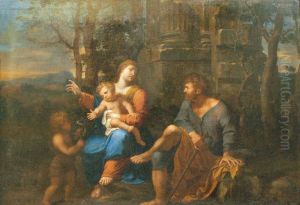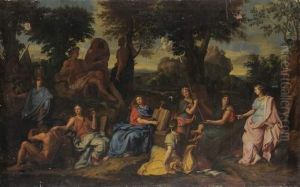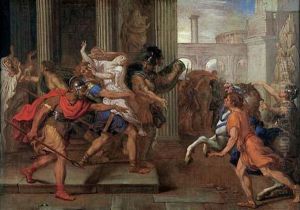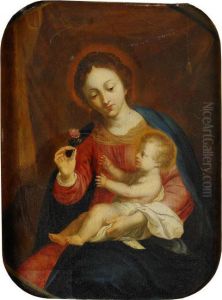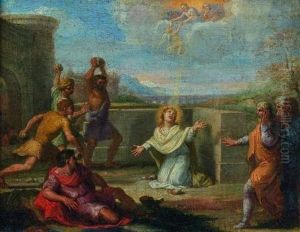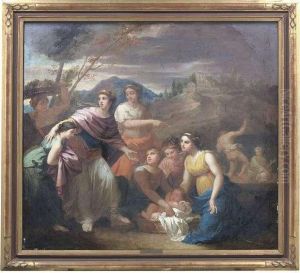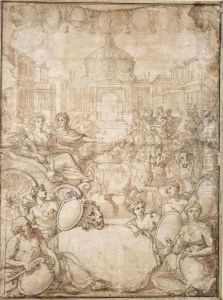Nicolas Loir Paintings
Nicolas Loir was a French painter, engraver, and draughtsman, born in Paris in 1624. He came from a family of artists; his father, Laurent Loir, was a landscape painter, and his brother, Alexis Loir, was also involved in the arts. Nicolas was initially trained by his father and later became a pupil of Sébastien Bourdon, a well-known French painter.
Loir's style was influenced by classical art and the work of the Bolognese school, which he encountered during his time in Rome. He was in Rome from 1647 to 1652 as a member of the French Academy in Rome, where he honed his skills and absorbed the Italianate influences that would be evident in his later work.
Upon returning to France, Loir received commissions for religious and historical subjects. He was particularly noted for his frescoes and altarpieces. His style was characterized by clear composition, precise drawing, and a fine sense of color. He became a member of the Royal Academy of Painting and Sculpture in Paris in 1663 and was later appointed as a professor at the academy.
Among his notable works are the 'Rape of Europa,' 'Minerva Fighting Mars,' and the ceiling painting 'Time Rescuing Truth from the Attacks of Discord and Envy' in the Hôtel de Ville, Paris. His works are held in various museums, including the Louvre in Paris and the Hermitage Museum in Saint Petersburg.
Nicolas Loir passed away in Paris in 1679. His art reflects a transitional period in French painting, from the Baroque grandeur influenced by Italy to the more classical French taste that would dominate in the late 17th and early 18th centuries. Throughout his career, Loir was well-regarded for his skill in both painting and engraving, leaving behind a body of work that contributed to the development of French art.







